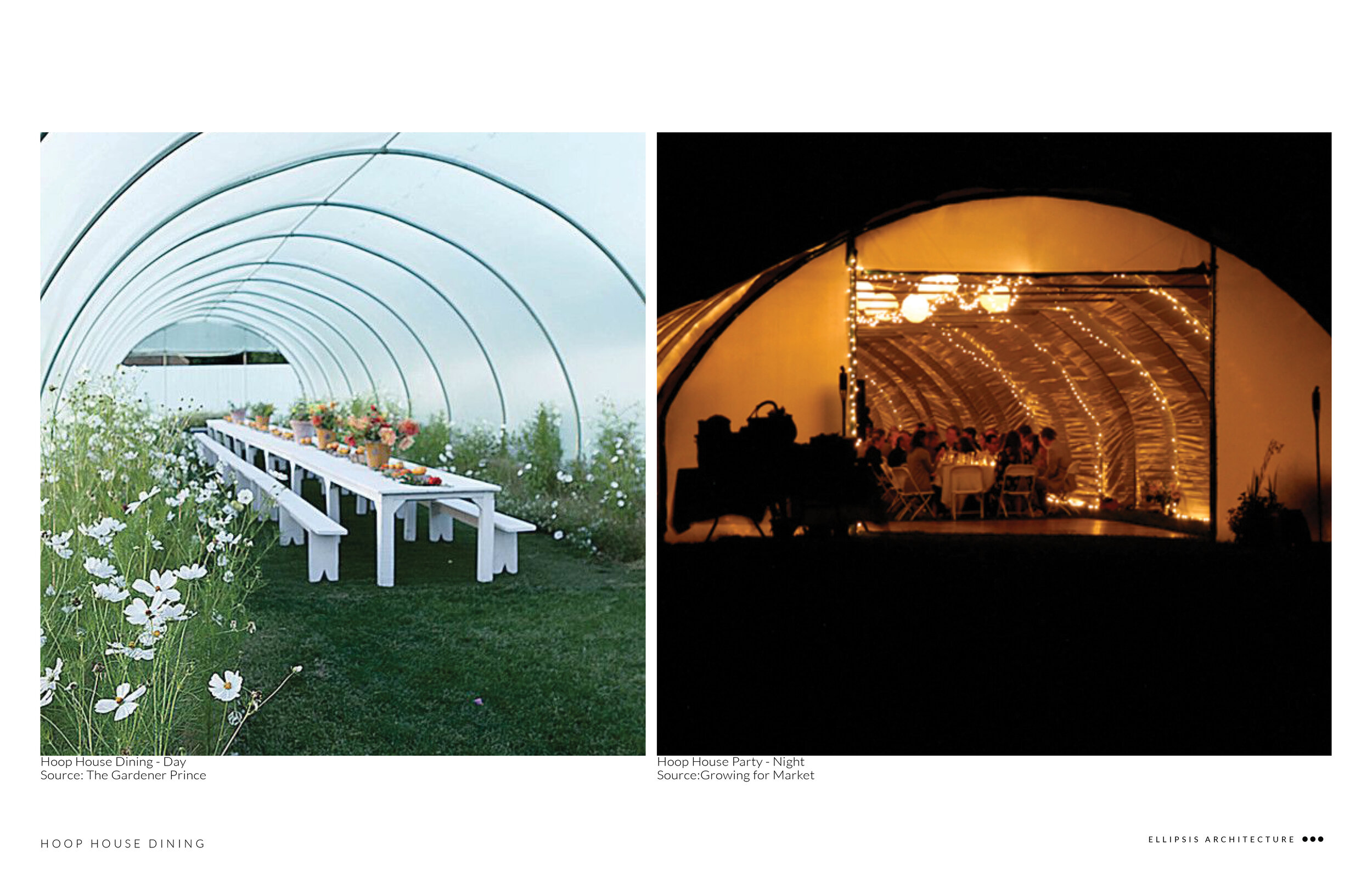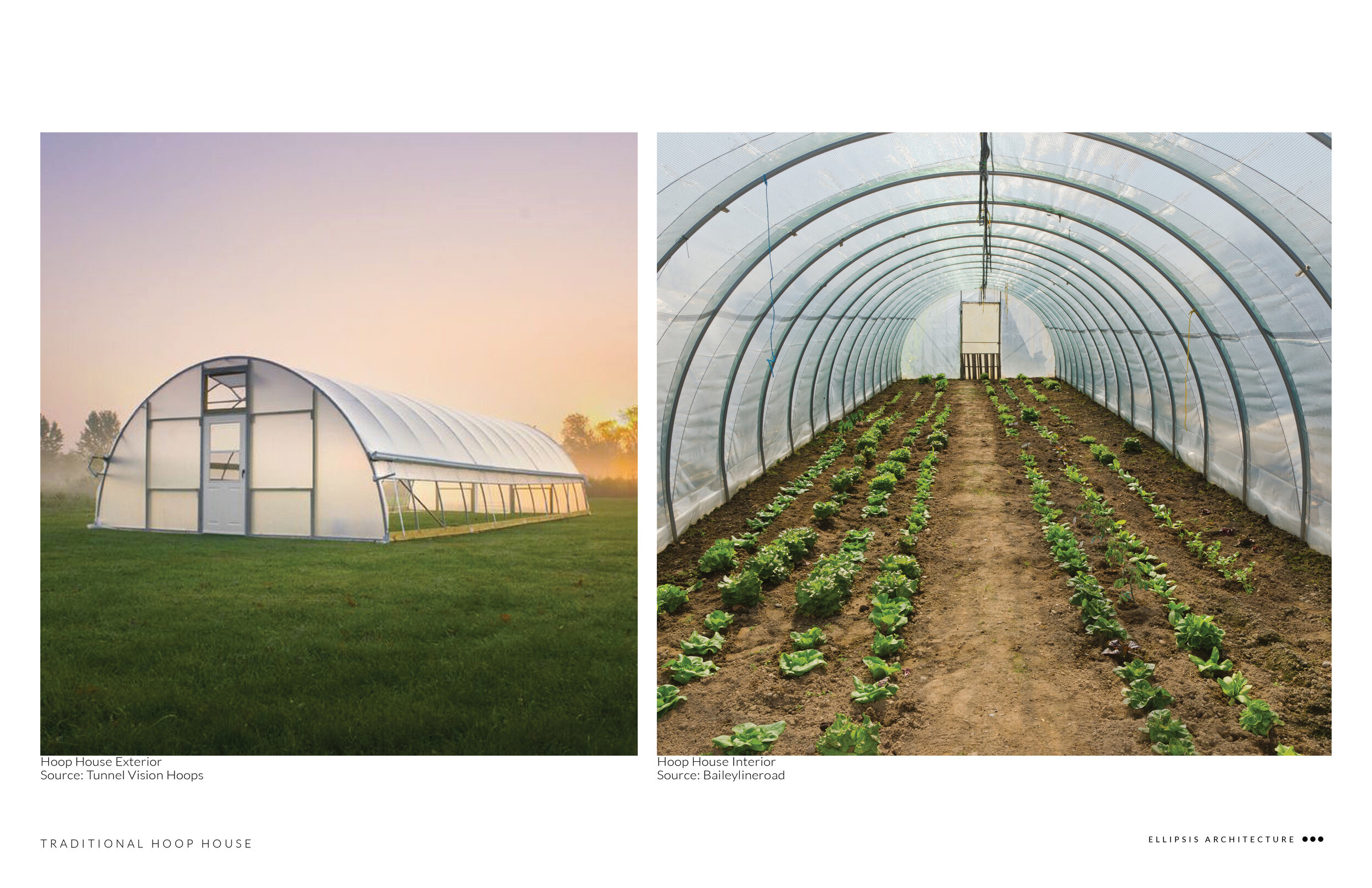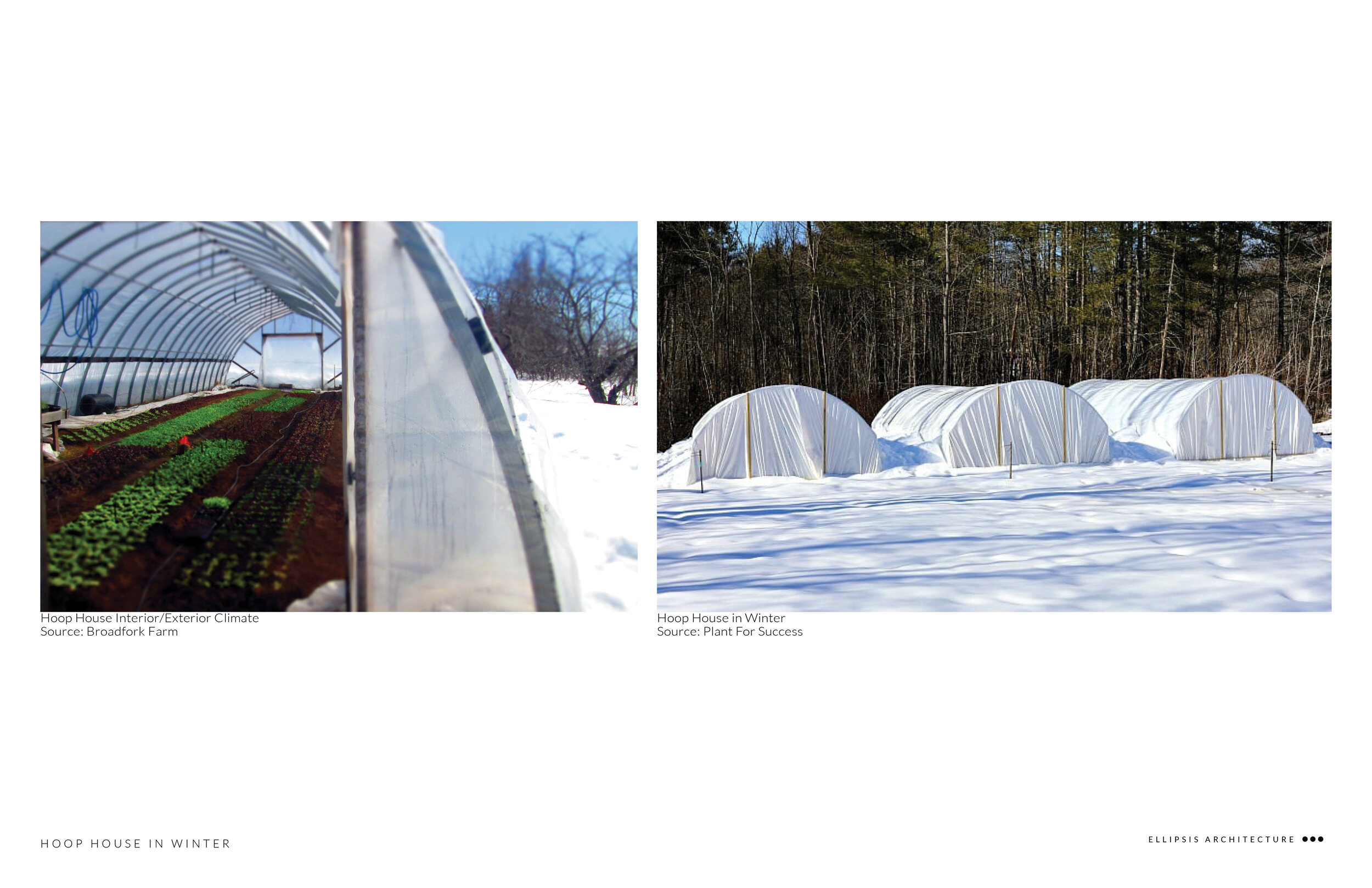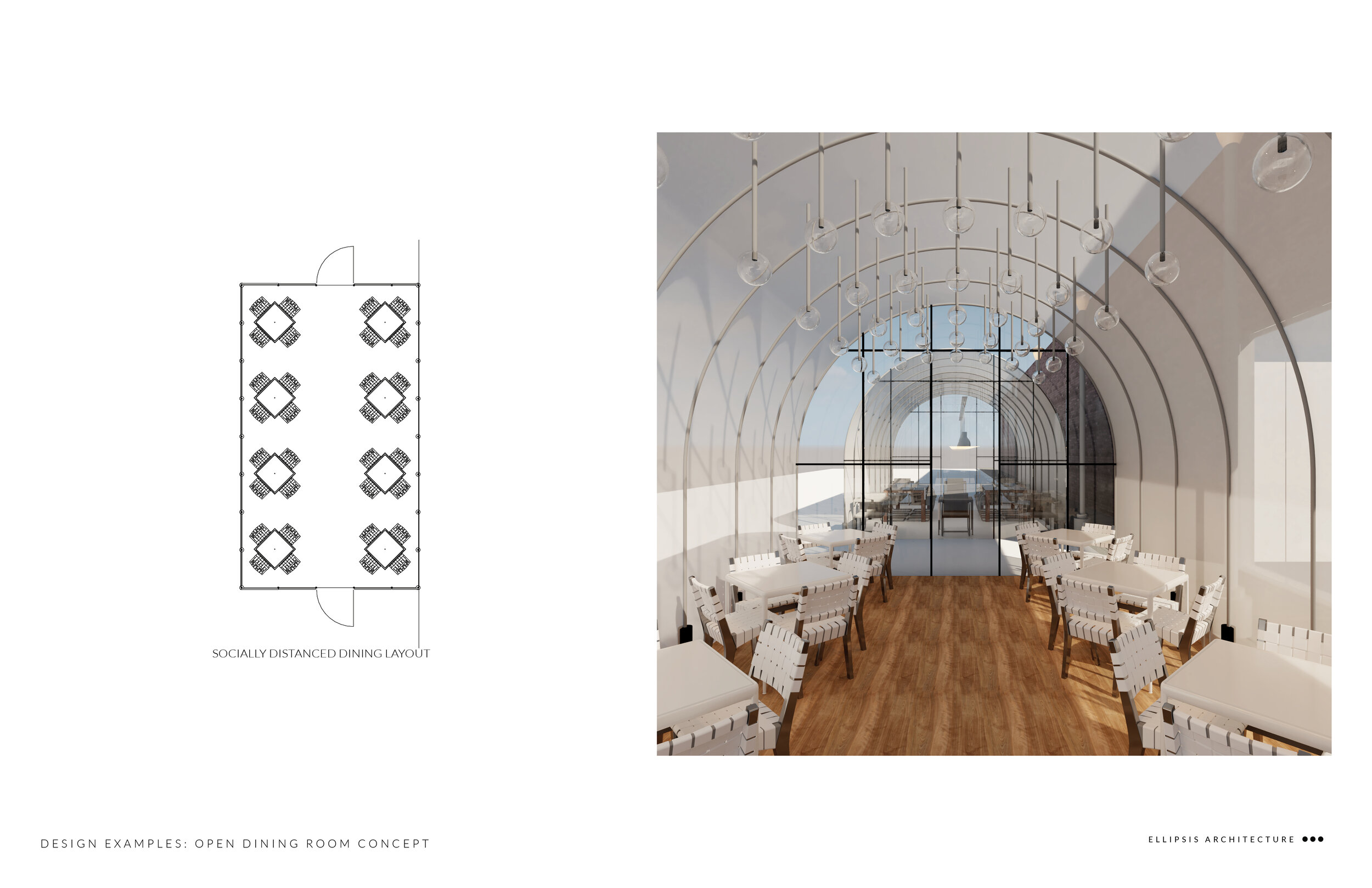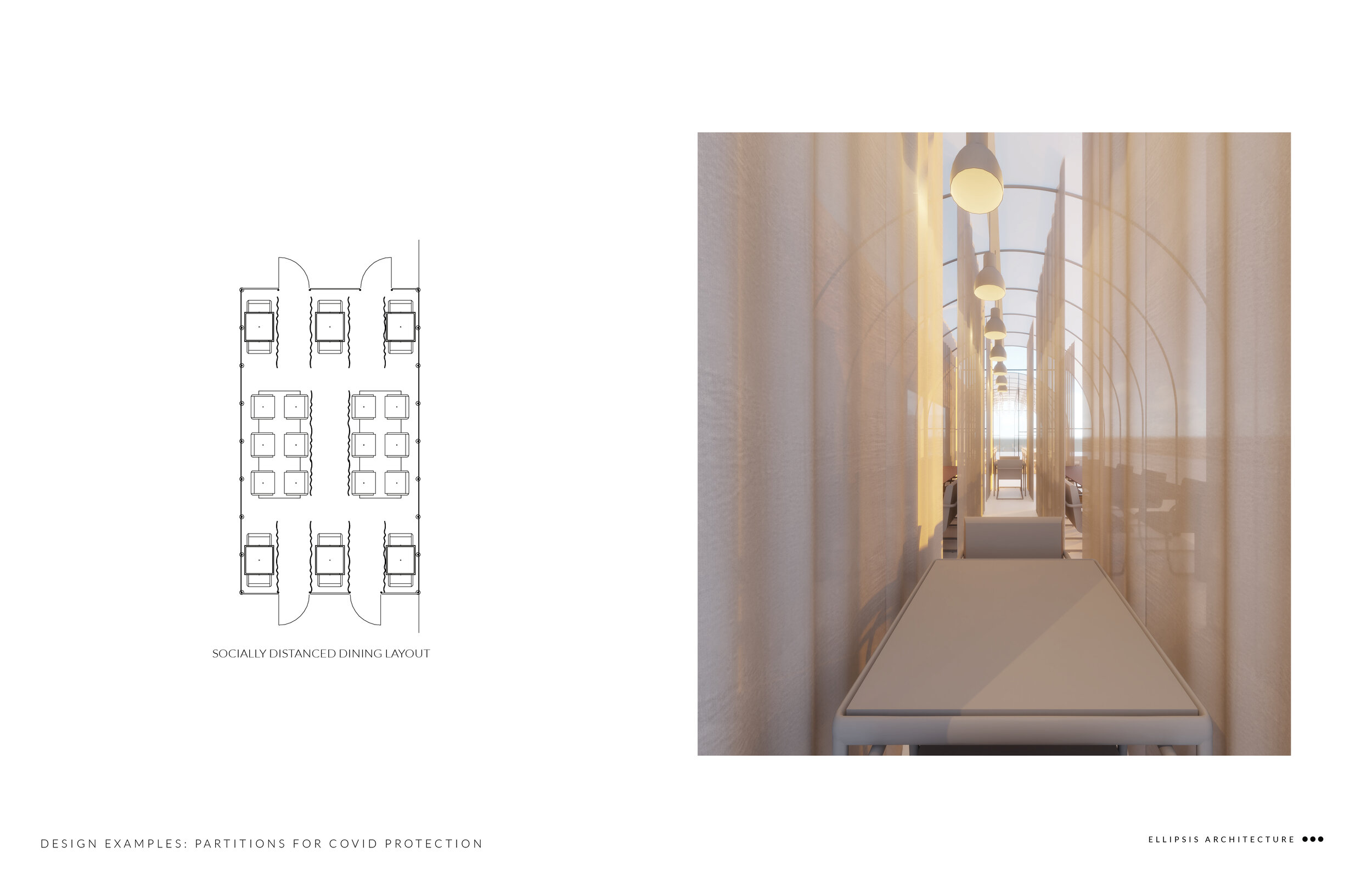Chicago Winter Dining Proposal
Warm, ventilated dining spaces built to maintain social distancing throughout the Chicago winter.
The traditional hoop house, typically used for gardening and farming in winter months, is re-purposed into customizable dining spaces for Chicago restaurants, cafes, and bars. The hoop house provides shelter from the cold and allows for restaurants, cafes, and bars to expand their dining space. These hoop structures would allow for these vital businesses to remain open and functional in the midst of the Covid-19 pandemic. They naturally heat during the day and, when appropriately configured, can be 20-30 degrees warmer than the exterior air. Supplemental heaters such as traditional outdoor heaters or heat lamps can provide additional heat as necessary. Airflow is maintained through vents and fans throughout the sides and ends of the structure.
FeasIbility
Hoop houses are readily used for winter farming and gardening. They are inexpensive structures that provide shelter, warmth, and additional square footage for distanced dining. Hoop houses can be purchased online from multiple retailers or can be made with easily attainable materials. There are many DIY videos and instructions online. Dimensions can be custom to each establishments' needs.
Water reservoirs in large, black containers would heat up during the day and keep the interior warm at night. These reservoirs could be used as table bases, for example. Another way to add heat would be with compost bins, sealed tight to prevent odor. The compost creates heat as it breaks down. Composting also provides an environmentally friendly solution for food waste.
In warmer months, hoop dining would still be a practical solution to distanced dining as it would protect customers from rain and shade the sun. The open ends and sides of the hoop tunnel could remain open to increase airflow.
Technical Overview
The implementation of hoop houses would require the City of Chicago to continue allowing street and sidewalk dining throughout the winter months. For restaurants with ample street access, such as the Fulton Market area, these structures would be easy to install. Businesses with only sidewalk access may need to allow for a pedestrian path through their hoop dining room. In either case, the customizable dimensions allow for this solution to work in various situations.
Prototyping
These structures already exist in many forms. They are proven to keep plants warm in the cold Chicago winter. The hoop houses could be as beautiful as they are functional. The low cost and ease of constructing a hoop house make them extremely feasible for restaurants, bars, and cafes. They could even build multiple hoop houses in custom dimensions as their exterior space permits. Each business can maintain its brand identity through the interior and exterior design. Graphics and logos could be printed or painted on the exterior. The interior design of each hoop house could express the brand identity through lighting, flooring, layout, and decor. Each establishment can curate their dining experience, allowing them to maintain individuality and presence in the Chicago dining scene.
User Research
The concept and design have been proven desirable by consumer groups. The concept feasibility has been proven by farmers' continued use. Hoop houses are easily scalable, replicable, and cost-effective.
Covid-19 Safety
The sides of the hoop structure can open at the bottom. The ends of the hoop can open, which creates tunnel ventilation. Additional air vents or fans can supplement airflow as needed. Each dining space could partition off to create private dining rooms and protect from the spread of respiratory droplets.
Hoop dining allows for businesses to expand their interior space and adhere to social distancing guidelines. Like a greenhouse, hoop houses often have high humidity. In the journal, Geographical Analysis, it was published that high humidity decreases the spread of Covid-19.



